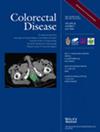Development and validation of an anastomotic risk score for use in a randomized clinical trial on defunctioning stoma use in low anterior resection for rectal cancer
Abstract
Aim
The selective use of defunctioning stomas in anterior resection for rectal cancer hinges on accurately predicting anastomotic leakage. The aim of this study was to develop a prediction model for use in a prospective randomized clinical trial.
Method
Colorectal Cancer Database (CRCBaSe) Sweden was used to identify patients who underwent low anterior resection for rectal cancer 2007–2021. Eligibility criteria mirrored the forthcoming SELective defunctioning Stoma Approach in low anterior resection for rectal cancer (SELSA) trial, including patients <80 years of age and with American Society of Anaesthesiologists' (ASA) physical status grade of <III; further, patients without a defunctioning stoma were excluded. The outcome comprised anastomotic leakage within 30 days or in-hospital. Candidate predictors included age, sex, ASA grade, cardiovascular disease, diabetes, body mass index (BMI), tumour stage, tumour height, and neoadjuvant therapy. Seven models were developed and internally validated using bootstrapping. A threshold of a predicted leakage risk of ≤10% was chosen for trial implementation. Validation was conducted using chart-reviewed data from a nested cohort.
Results
Of the 2727 eligible patients, 199 (7.3%) were registered with an anastomotic leakage. All models demonstrated similar performance, with prediction instability observed for risks exceeding 12.5%. The preferred model included three significant predictors: male sex (OR 2.00; 95% CI: 1.45–2.75), BMI >30 kg/m2 (OR 1.82; 95% CI: 1.21–2.74), and radiotherapy (OR 1.90; 95% CI: 1.35–2.69). The bootstrapped area under the curve (AUC) was 0.64 (95% CI: 0.62–0.65), with a negative predictive value of 94.6% (95% CI: 93.7%–95.6%). For the validation cohort, the corresponding estimates were 0.66 (95% CI: 0.59–0.74) and 89.5% (95% CI: 86.2%–92.5%).
Conclusion
Accuracy of anastomotic leakage prediction using registry-based data is moderate; however, the model's ability to rule out a >10% risk is considered appropriate for trial use.


 求助内容:
求助内容: 应助结果提醒方式:
应助结果提醒方式:


